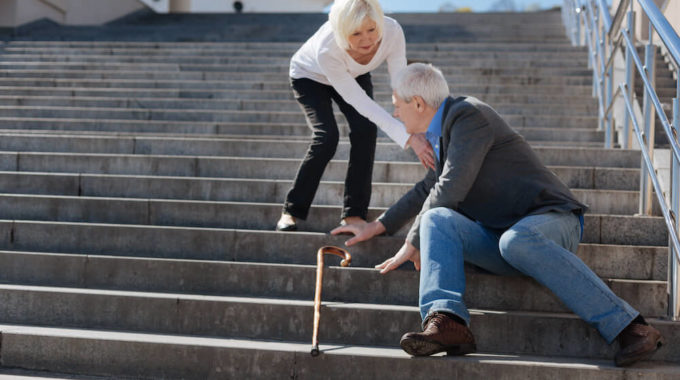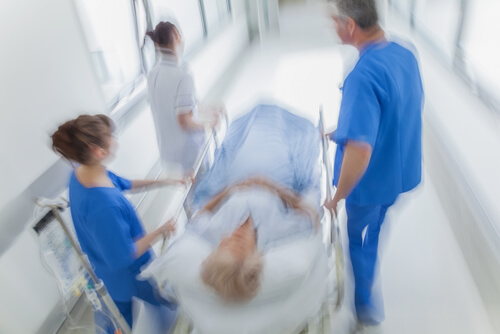
10 Facts About Strokes Every Senior Should Know
Strokes are a very serious medical condition that can be fatal if not treated immediately. Stroke is the fifth leading cause of death and a leading cause of disability in the United States. Even people who present as perfectly healthy can suffer from strokes. A stroke happens when either a blood vessel that carries oxygen and nutrients to the brain is blocked by a clot or the vessel bursts. The brain doesn’t receive the oxygen-rich blood it needs and brain cells start to rapidly die. It’s important to understand the signs and symptoms of a stroke so that you can prevent further damage from happening once it is recognized.
Here are 10 facts about strokes that every senior should know.
1. Incidences
Strokes kill about 140,000 Americans every year. That accounts for one in 20 deaths. Someone in the U.S. has a stroke every 40 seconds and dies of a stroke every four minutes. More than 795,000 people in the U.S. have a stroke every year. Typically, people who have had a stroke before are more likely to have another.
2. Race and Ethnicity
The risk of having a stroke varies with race and ethnicity. The risk is almost twice as high for African Americans as for whites – African Americans have the highest death rate due to stroke. The rate of strokes has declined for all races/ethnicities over the past few decades, but Hispanics have seen an increase in death rates since 2013.
3. Age
Seniors are at a particularly high risk of stroke. The odds increase with age but it can, and does, occur with any age group. According to the CDC, in 2009, 34 percent of people hospitalized for stroke were under 65 years old.
4. Risk Factors for strokes
The biggest risk factors for stroke are health concerns that can be monitored and managed before symptoms of stroke present themselves. High blood pressure, high cholesterol, smoking, obesity, and diabetes are the leading causes of stroke. One in three adults in the United States has at least one of these conditions or habits. Steps can be taken to better manage these conditions, and it’s important to speak with a health care professional to ensure patients are taking good care of their health. Risk factors for stroke are similar to those of heart disease.
5. Symptoms
Being aware of the warning signs and symptoms of stroke is critical to minimizing the damage a stroke can cause. If a patient can recognize the signs in him or herself or in another person, the chances of survival are much greater. According to the CDC, 93 percent of people recognize sudden numbness on one side as a symptom of a stroke. But, only 38 percent were aware of all major symptoms and knew when to call 911 when someone was having a stroke. Patients who get to the emergency room within three hours of the first symptoms usually have fewer impairments three months after a stroke than those who received delayed care.
Symptoms of a stroke can include sudden numbness in the face, arm or leg, sudden confusion, trouble speaking or difficulty understanding speech, sudden trouble seeing in one or both eyes, trouble walking, dizziness or loss of balance or sudden severe headache.
6. Causes
Strokes are caused by blood clots or weakened or burst blood vessels in the brain. The most common type, an ischemic stroke, accounts for 87 percent of all cases. Hemorrhagic strokes account for about 13 percent of stroke cases. A transient ischemic attack is caused by a temporary clot and is known as a warning stroke because they only last a minute or two but can be a sign of a larger problem.
7. Prevention
There are many ways to prevent a stroke from happening, and most have to do with general health care. Maintaining a healthy diet full of fresh fruits and vegetables, low-sodium ingredients, low-fat proteins, nuts, healthy oils and fibers can help patients to keep their blood pressure low, maintain a healthy weight and lower cholesterol levels. Regular exercise is also good for lowering blood pressure and cholesterol. Smoking cessation is a powerful way to maintain good health and lower the risk of stroke. If a patient has diabetes, they should talk with a doctor about the risk of stroke and how to prevent it.
8. Treatments
Acting fast is the only real treatment for stroke. The treatments that work best only work if they are put in action within three hours of the first sign of a stroke. It’s important to follow these steps if someone is suspected of having a stroke:
- Ask the person to smile and notice if one side of the face droops.
- Ask the person to raise both arms and notice if one side can’t be lifted or drops downward.
- Ask the person to repeat a simple phrase, such as “I need to go grocery shopping today.” Notice if the speech is slurred or strange.
- If any of these signs seem alarming, it is urgent to call 911 right away.
Even if the symptoms don’t persist, it’s important to notify a health care professional right away because it could be sign of a transient ischemic attack – it’s a brief stroke that will recur without treatment and could cause permanent brain damage or death over time.
9. Cost of Care
The average cost of care for a stroke patient is $18,963. The cost of hospitalizations for strokes are high and can vary greatly depending on the type of stroke and other conditions the patient has.
10. Family History
A patient’s family history can greatly increase the chance of stroke. It’s important for patients to notify their doctors if they have a family history of stroke and to pay particular attention to lifestyle habits in order to minimize their risk.






